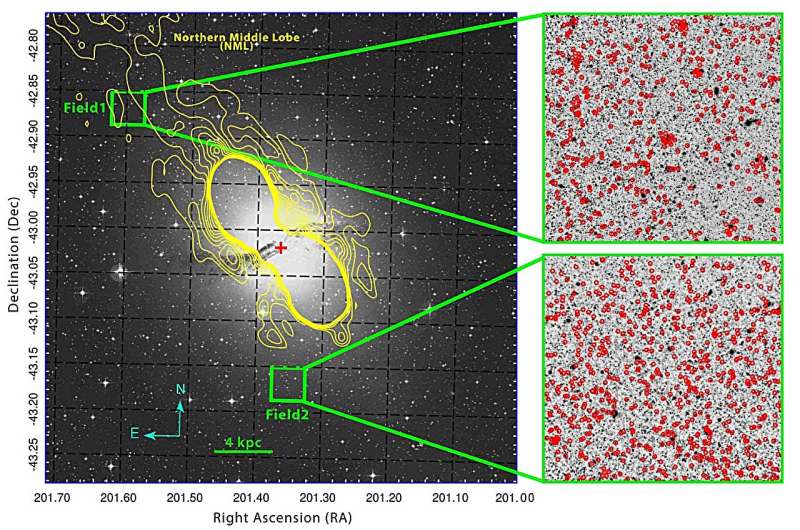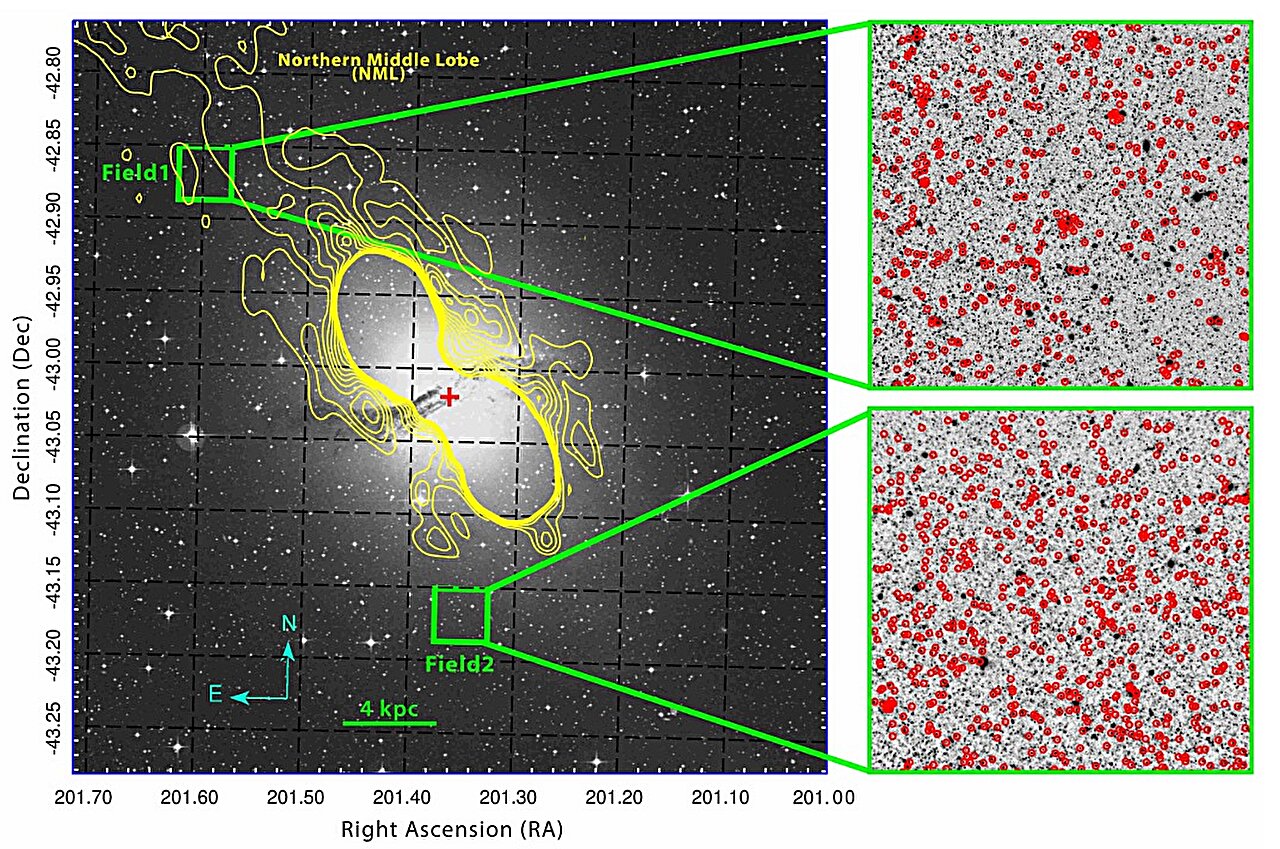
Archival optical image (at 468 nm wavelength) of NGC 5128 taken with the UK Schmidt telescope superimposed on the location of the two fields studied. The red cross indicates the center of NGC 5128. The red circles represent the locations of LPVs selected from the ISAAC Ks-band data. Credit: Aghdam et al., 2024.
Using the Very Large Telescope (VLT) in Chile, astronomers have observed the halo of a giant elliptical galaxy known as Centaurus A. The results of the observing campaign, published on June 1 on the pre-print server arXivprovide important insights into the star formation history of the investigated halo.
Discovered almost two centuries ago, Centaurus A (also known as NGC 5128 or Caldwell 77) is the nearest giant elliptical galaxy – at a distance of about 12.4 million light years. It is also one of the closest radio galaxies to Earth, so its active galactic nucleus (AGN) has been widely investigated by researchers.
Centaurus A has an extended halo and radio lobes that cover almost 2 degrees of the sky in optical maps. Its extended halo has been the subject of many studies in the past, attempting to probe the galaxy’s formation history, given that Centaurus A is believed to be a post-merger galaxy.
Recently, a team of astronomers led by Sima T. Aghdam of the Institute for Research in Basic Sciences in Tehran, Iran, has conducted VLT observations of Centaurus A, aiming to better understand its origin and properties. The focus of their study was two small areas in the halo of this galaxy. By investigating variables in these two areas, they wanted to gain more insight into the star formation history of Centaurus A.
“Our method is based on the identification of long-period variable (LPV) stars that trace their stellar population and thus historical star formation due to their high luminosity and strong variability,” the researchers explained.
First of all, the team identified 395 LPVs in the northeastern field, designated as Field 1 (located about 61,300 light-years from the center of Centaurus A), and 671 LPVs in Field 2 – the southern field (about 32,300 light-years from the center of the galaxy). .
Astronomers found that even though the two fields are about 91,000 light-years apart on different sides of Centauri A, they show similar star formation histories. It turned out that in Field 1 and Field 2, the rate of star formation increased significantly around 3.8 billion 800 million years ago.
The paper’s authors hypothesize that the last extended star formation, which began about 800 million years ago, may have been the result of a merger that occurred about 1 billion years ago. They added that most of the stars in Centaurus A’s halo formed earlier than 400 million years ago.
Based on the collected results, the researchers hypothesize that Centaurus A may have formed a small, gas-rich spiral galaxy, which provided the fuel for continued star formation at its center. Furthermore, they conclude that the middle-aged stars either came from that accreted galaxy or may have come from an earlier merger.
More information:
Sima Taefi Aghdam et al, The Complex Star Formation History of the Halo of NGC 5128 (Cen A), arXiv (2024). DOI: 10.48550/arxiv.2406.00517
Magazine Information:
arXiv
© 2024 Science X Network
citation: Observations explore the halo of Centaurus A (2024, June 12) Retrieved June 12, 2024 from https://phys.org/news/2024-06-explore-halo-centaurus.html
This document is subject to copyright. Except for any fair agreement for study or private research purposes, no part may be reproduced without written permission. The content is provided for informational purposes only.
